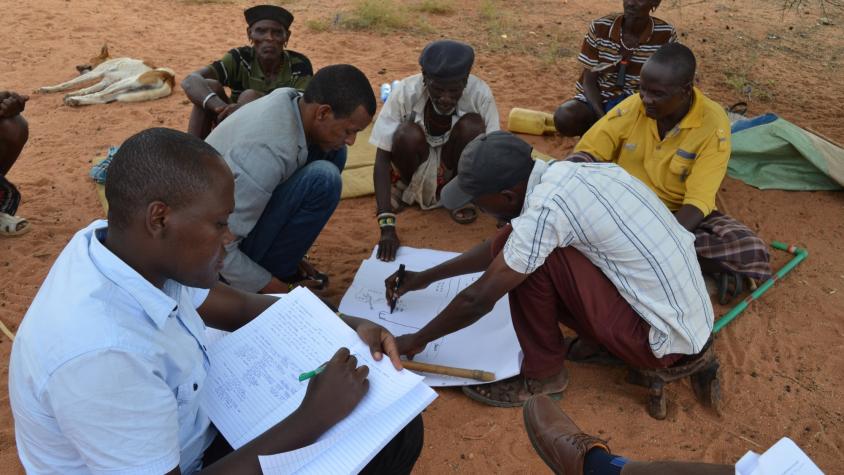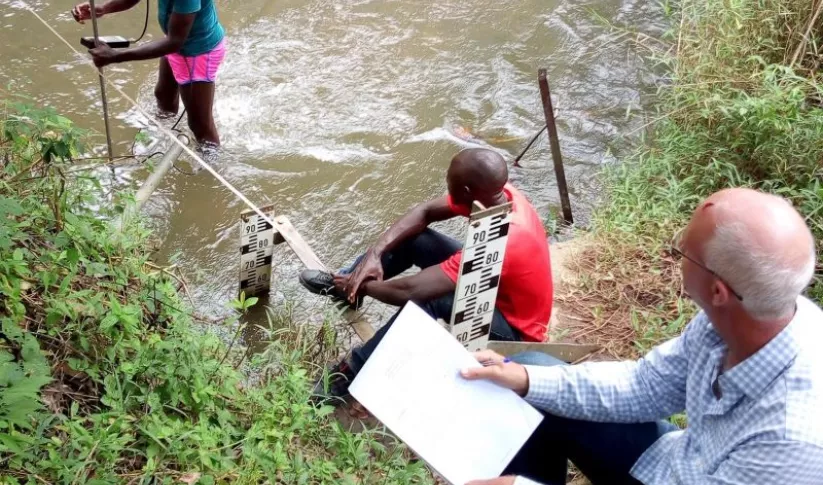Climate Change Vulnerability, Impacts, and Assessments Service

The Climate Change Vulnerability, Impacts and Assessments Service assesses climate change impacts on vulnerable communities, water resources, and ecosystems in order to better address resilience building activities. The service provides data, maps, and information on vulnerability hotspots to decision makers in government and non-government agencies so they can prioritize resilience building programs for the most vulnerable areas. This service integrates remote sensing data, including rainfall and temperature trends and variability from CHIRPS and CHIRTSmax; socioeconomic dynamics, such as living standards; and environmental data, such as soil health and trends in land cover and land use to produce vulnerability indices in the form of maps.
These timely satellite-derived products provide a more complete and holistic assessment of the regional landscape, as opposed to observations which represent only that particular point in space. These maps show areas, or "hotspots", which are experiencing a combination of climate and environmental related stresses, and socioeconomic pressure. The derived information is then integrated into decision-making processes by the end users to support water security planning, the protection of community livelihoods, and biodiversity conservation.
Rationale
Climate variability and change in the rangelands of Kenya and in major river basins in Tanzania are likely to significantly alter the functioning of these regions and their ability to support community livelihoods, biodiversity, and the availability and quality of surface and groundwater resources. These landscapes are under increasing pressure from a range of climate and non-climate drivers of vulnerability. Irrigated agriculture, livestock, and industry have grown significantly in these landscapes and are projected to increase well beyond sustainable use. Additionally, several studies conducted in these landscapes identify increasing uncertainty of rainfall onset, duration, distribution, and amount, as well as increasing temperatures. These issues lower water tables, increase the likelihood of droughts and floods, increase pressure on water resources, reduce dry season grazing lands, diminish livestock herds, and have a negative impact on water quality and quantity for environmental, human, and productive uses. Additionally, as demand for water rises and the risk from climate variability increases in these basins, efficient management of the water resource has become a very critical outcome to guarantee sustainable use of the resource.
Sustainable management of water resources is partly dependent on access to accurate and reliable information such as onset, cessation, duration, trends in rainfall, trends in temperature, amount of available surface water in the basins, land use and land cover dynamics, evapotranspiration, population growth, and other demands such as power generation, irrigation, etc. In view of this, long and temporally consistent rainfall and temperature time series data are essential in climate risk analyses and applications. However, the availability of this type of data is impeded by a poor/limited monitoring and reporting network of hydroclimatic stations, thus undermining the reliability of climate analysis, short term forecasts, and long-term projections. The integration of ground-based observations with proxy satellite and other data helps overcome issues of data scarcity and poor quality, introducing quality-assessed and spatially complete data services into agencies to serve stakeholder needs.
-
Users
Water Resources Integration Development Initiative (WARIDI)
Basin water offices in Tanzania
Meteorological agencies and hydrological agencies in Kenya, Tanzania, Uganda, Rwanda, Malawi, Ethiopia and Zambia
Northern Rangelands Trust in Kenya
-
Data Products
Tanzania Wami Ruvu Rufiji Exposure Index
Tanzania Wami Ruvu Rufiji Sensitivity Index
Tanzania Wami Ruvu Rufiji Lack of Adaptive Capacity
Tanzania Wami Ruvu Rufiji Overall Vulnerability Index (Community Sector)
Tanzania Wami Ruvu Rufiji Overall Vulnerability Index (Water Sector)
Tanzania Wami Ruvu Rufiji Long Term Rainfall Trend
Tanzania Wami Ruvu Rufiji Long Term Rainfall Coefficient of Variation
Tanzania Wami Ruvu Rufiji Long Term Mean Max Temp Layer
Tanzania Wami Ruvu Rufiji Flood Frequency Layer
Tanzania Wami Ruvu Rufiji Population Count
Tanzania Wami Ruvu Rufiji Poverty Index
Tanzania Wami Ruvu Rufiji Under-5 Mortality Rate
Tanzania Wami ruvu rufiji Soil Organic Carbon Index
Tanzania Wami Ruvu Rufiji Land Use Land Cover
Tanzania Wami Ruvu Rufiji Malaria Endemic Index
Tanzania Wami Ruvu Rufiji Clean Water Access
Tanzania Wami Ruvu Rufiji Health Infrastructure Index
Tanzania Wami Ruvu Rufiji Market Access


